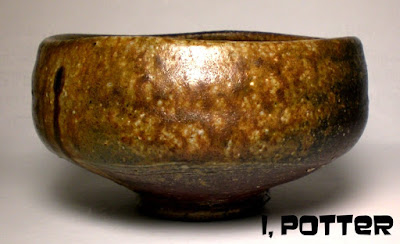What is particularly unique about these two vases is that each is based on Japanese locks, just like a Western style padlock mostly seen in use in the Edo, Meiji, Taisho and early Showa eras. As it is rather easy to see, these forms, though perhaps a bit modified, lend themselves rather easily to the aesthetic and function of a flower vase with their exacting and crisp details softened ever so slightly by the natural ash built up that accentuates the surfaces. In the end, we get this small glimpse in to the mind of the maker and beyond the aesthetics of the object we are left to sit, contemplate and ponder, just exactly where the idea really comes from and what is the potter thinking or trying to communicate.
"The conscious mind may be compared to a fountain playing in the sun and falling back into the great subterranean pool of subconscious from which it rises." Sigmund Freud









